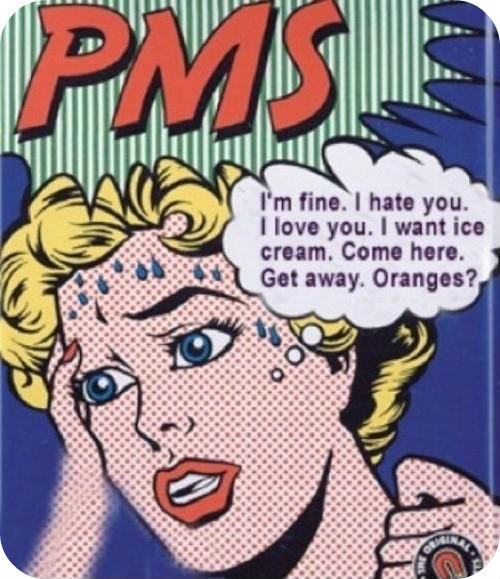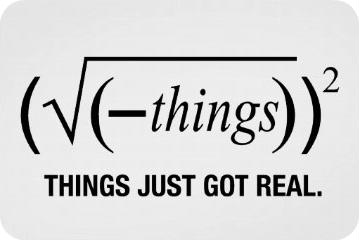Remember when we talked about Paris Hilton and decided that John Belushi shouldn’t diagnosis people with mental disorders? (If not, check it out – you missed the guy from Reading Rainbow!) Well today I want to start a new series on diagnostic labeling – because some serious drama is about to go down. That’s right, you guessed it – the latest edition of the Diagnostic Statistical Manual of Mental Disorders comes out in May! Oh yeah:
What can I say? Ever since I got my tattoo, I’ve been a lil gangsta ;)
For those of you who don’t know you betta ask somebody!, the DSM is this huge book that classifies mental disorders. It’s really important because it provides clear language for doctors and patients to use when discussing symptom development and (more importantly for those dolla dolla bills y’all): it helps determine what medical expenses your insurance company will or will not cover. (Ok sorry: my gangster phase has officially passed. I think talking about statistical manuals and insurance policies killed it.)
Long story short: this is the book that tells you what’s wrong.
The DSM lists criteria for each disorder and basically serves as a big psychiatric Trapper Keeper. (Do kids still use those anymore?!) What makes it into the binder, and what gets left out, can stir up quite the controversy – as is always the case each time the DSM comes out with a new edition. We’re currently on the fifth round and, between “temper tantrum” disorders and the inclusion of severe PMS as a defined mental illness, this version promises to be no exception.
I’m sorry, wait. Did you just say PMS was a mental illness?
Well, not me so much as the American Psychiatric Association… And not PMS so much as PMDD (premenstrual dysmorphic disorder). But, yes. That definitely just happened.
 Previously referenced in the appendix of the DSM-IV, PMDD makes its big league debut with the DSM-V. Experts predict that “far less than 10%” of premenopausal women will experience “premenstrual distress of the type and severity that would meet the proposed DSM-V diagnostic criteria.” But those who do will qualify for a mental disorder diagnosis.
Previously referenced in the appendix of the DSM-IV, PMDD makes its big league debut with the DSM-V. Experts predict that “far less than 10%” of premenopausal women will experience “premenstrual distress of the type and severity that would meet the proposed DSM-V diagnostic criteria.” But those who do will qualify for a mental disorder diagnosis.
I haven’t spent a lot of time thinking about this one… (I’ve been too busy writing letters to the editor of the New York Times about elimination of the bereavement exclusion in major depressive episodes – which I’m sure someone is on the edge of their seat reading right now…) so I’ll leave this one up to you guys to discuss!
This journal article outlines arguments for including PMDD; this journal article outlines articles against (note: the second article was written in 2004, when PMDD was still just in the appendix – imagine how upset the authors must be now!). My suggestion is to form your own opinion, then read the opposite paper and see how you feel at the end.
So those are the basics
Like I said, there’s always going to be some type of drama surrounding DSM publication – which I think is important to point out, as that claim is the first line of defense used against critics of DSM change. And while we’re clearing the playing field, I think I should also stress: I don’t have a problem with classification systems (I think they’re necessary); I don’t have a problem with diagnostic labels (I think they’re essential). I’m not part of some fanatical, anti-psychiatry revolution (or any anti-psychaitry revolution – you know, just to be clear). I’m just a regular psychology student with some very specific, very legitimate concerns about the DSM-V.
And I think I deserve to have my objections taken seriously.
…But until that happens, I’ll just rant and rave about them here on my blog! haha :)
So get excited, because over the next week we’re going to talk about elimination of the bereavement exclusion (I know all that negation sounds awkward, but the phrasing will make more sense next post!) and disruptive mood dysregulation disorder – or, as it’s known in the streets: a fast way to label your kid with a mental disorder when he annoys you with too many tantrums! (Hey, look at that! My gangsta lean is coming back!)
But in the meantime, remember: if you’re not a doctor…
Can’t wait to hear your thoughts on PMDD and the DSM-V!
I haven’t formed my own opinion yet, so really looking forward to hearing yours!
References
Epperson, C.N., Steiner, M., Hartlage, S.A., Eriksson, E., Schmidt, P.J., Jones, I. and Yonkers, K. (2012). Premenstrual Dysphoric Disorder: Evidence for a New Category for DSM-5. American Journal of Psychiatry. Retrieved: 20 March 2013.
Offman, A. & Kleinplatz, P.J. (2004). Does PMDD Belong in the DSM? Challenging the Medicalization of Women’s Bodies. The Canadian Journal of Human Sexuality, 13(1). Retrieved: 20 March 2013.




I’m looking forward to the series! I think the bottom line, at least in practice, is that the DSM (like you said) gets the bills paid. I come from the field of social work where the DSM is taken with a large grain of salt. There are pros and there are cons, but at the end of the day, right now anyways, it’s a way for mental health professionals to be paid and for mental health services to be accessible to people (due to the cost). Some people also find it relieving to know that there’s an actual name for what they are experiencing – that it’s not them (they aren’t crazy), it’s a disorder and they aren’t alone in it. Anywho, I’m sure we could probably carry on a conversation together for hours on the topic. Hehe.
As for PMDD… I’ve mostly worked with adolescents, so I’ve never really paid much mind to PMDD. I’ll have to scope out those articles. :D
Hi Ali! I agree, we could probably talk all night! :) I’m interested to hear your thoughts on PMDD (I’ve been working on the next series post – it should be live within the hour! – so I still haven’t really had an opportunity to devote much thought to it). I think you’re dead on about the getting the bills paid/services covered thing. (My next article goes into the pros and cons of insurance coverage for bereavement cases.) I also agree with what you said about people finding solace in labels (a little off topic: but when I finally figured out I was gluten-intolerant I was so incredibly relieved – even though not a single one of my symptoms was fixed!). I think we have to careful, though, with caving into the temptation to label everything (I’m mostly just thinking about my bereavement post right now…) Can’t wait to hear what you think of the next article, and thanks so much for reading! Feel free to email me if you ever want to talk more! :)
Glad to see someone posting about PMDD who is actually 1) informed, and 2) open-minded about it! Pat yourself on the back for being less judgmental than 95% of other people posting on the topic. :)
There’s a ton of relief in knowing what’s going on and being able to strategically and proactively address it. But there’s very little solace in knowing that no one will take this label seriously for decades.
Hi DeeDee! :) Thank you – I think it’s really important to stay as open-minded as possible. I’m not that familiar with PMDD (outside of the basics) but I thought the DSM’s inclusion presented a good opportunity for discussion! Thank you so much for commenting :) All the best ♥
As a woman with PMDD, I would love to give my opinion.
First, I understand the backlash. At face value this disorder basically just sounds… Silly! I’m sure that if I didn’t suffer from it my opinion would be like everyone else’s — “Periods are a mental disorder now? Seriously?” But there really is so much more to it than that, and I hope everyone will be open-minded to accepting PMDD is a serious condition.
For a moment, try to forget that PMDD has anything to do with periods or PMS, and let’s look at the symptoms alone:
Two weeks out of the month, I suffer from depression.
Two weeks out of the month, I have horrible abdominal cramps. Even if mentally I’m feeling alright, physically things are so bad that I’m still unable to get out of bed. I have awful breast pain, joint pain, and migraines.
A week or so out of the month, I’m an insomniac. I simply can’t sleep. I lie awake all night, typically crying because of my constant anxious and depressive thoughts (although these thoughts don’t leave my head for the full two weeks, nor do the tears).
If you had no idea that these symptoms were so closely related to a girl’s period, what would you think? I could go on for quite a lot longer about my symptoms. When my period finally arrives, the cramps worsen and spread through my entire body. I have to get to a toilet immediately because the second I get my period, I get pretty bad diarrhea and spend about two hours throwing up. And when I say “immediately”, I promise I’m not exaggerating. I actually get very nervous on the day my period should arrive specifically because of what may happen if I don’t have immediate access to a restroom. Again, my list of symptoms goes far beyond what I’ve written here.
My cramps first began when I was fifteen years old. My symptoms got worse and worse by the month until I only had two good weeks out of the month. I couldn’t study or work. When I was eighteen I decided to go on birth control and it’s served me well (I’m now nineteen). I still get fairly bad anxiety and insomnia the first couple days of my period, but my physical symptoms and depression are basically gone. My relationships, school, and work are no longer at stake. I no longer live in fear of those two weeks that I have to stuff my throat with painkillers just to get out of bed.
In my opinion, it’s not PMS that’s being treated as a mental illness. What’s being treated as a mental illness is depression, along with some debilitating physical symptoms, that take up precisely 50% of the patient’s month, each and every month.
I hope this is informative in some way. :)
Thank you for being open minded!
Lorelai,
Thank you so much for sharing! Your perspective definitely adds a lot to the conversation. Like I said, I haven’t had an opportunity myself to fully form an opinion – so your thoughts are very much appreciated! Several of your points really drew my attention to the mind/body nature of the disorder – as with so many problems, it seems we’re in need of better/increased coordination between MD’s and therapists… Thanks again for sharing!